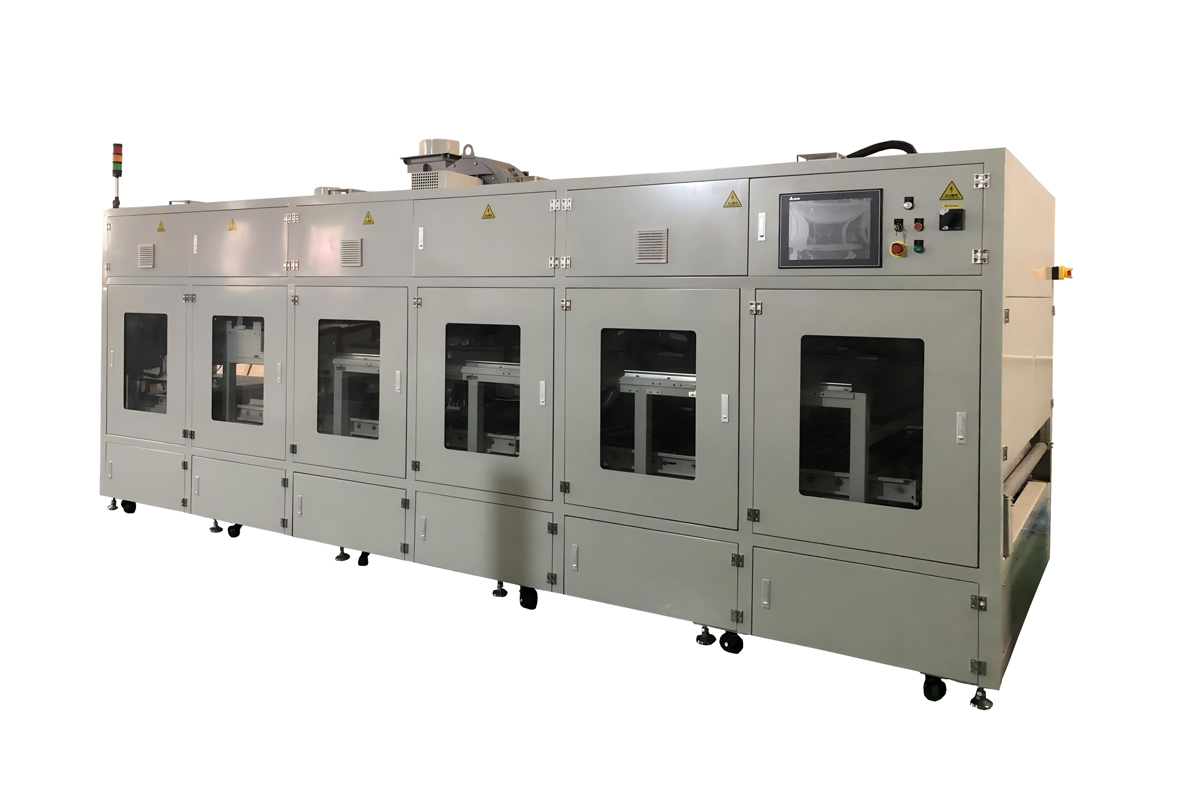Introduction
The Cutting Machine for MCM (Modified Casting Material) Soft Porcelain Production Line is a specialized industrial equipment designed for precision cutting of soft porcelain sheets used in construction and decorative applications. This machine plays a critical role in transforming large-format soft porcelain panels into customized sizes and shapes with high accuracy and efficiency.

Key Features with Technical Specifications
The Cutting Machine for MCM soft porcelain boasts several advanced features:
High-Precision Cutting: Utilizes diamond-tipped blades with a cutting accuracy of ±0.1mm for clean edges and minimal material waste.
Variable Speed Control: Adjustable cutting speeds ranging from 0.5-5 m/min to accommodate different thicknesses (3-20mm) of soft porcelain.
Automatic Feed System: Equipped with servo motors providing feed rates up to 10 m/min with positioning accuracy of ±0.05mm.
Dust Extraction: Integrated vacuum system with 99.7% dust collection efficiency, operating at 3000m³/h airflow.
Multi-Angle Cutting: Capable of 0-45° angle cuts with ±0.2° precision for complex installations.
CNC Control System: Features a 15" touchscreen interface with memory for up to 1000 cutting patterns.
Safety Features: Includes emergency stop, blade guards, and light curtains with response time <10ms.
Applications in Various Industries
The cutting machine serves multiple application scenarios across different sectors:
1. Construction Industry
In large-scale construction projects, the machine processes soft porcelain panels for:
Facade cladding systems requiring precise dimensional tolerances
Interior wall coverings with complex geometric patterns
Floor tiling solutions for commercial spaces
2. Architectural Design
Architects and designers utilize the machine for:
Custom-shaped decorative elements with intricate curves
Seamless large-format installations up to 3200×1600mm
Ventilated facade systems requiring precision-cut components
3. Interior Decoration
The machine enables creation of:
Feature walls with precisely cut mosaic patterns
Custom countertops and tabletops with perfect edge finishes
Decorative panels with complex inlay designs
4. Restoration Projects
Historical building restoration benefits from:
Replication of original decorative elements
Precision cutting of replacement tiles to match existing patterns
Custom solutions for irregular architectural features
Maintenance Procedures
Proper maintenance ensures optimal performance and extends the machine's service life:
Daily Maintenance
Clean all cutting surfaces and remove debris using compressed air (6-8 bar pressure)
Inspect diamond blades for wear (replace when thickness reduces by 15%)
Check coolant levels (water-soluble type, 5-8% concentration)
Verify all safety systems are functional
Weekly Maintenance
Lubricate all guide rails and linear bearings with ISO VG68 grease
Inspect belt tension (proper deflection should be 10-15mm per 1000mm span)
Clean and inspect the dust extraction system filters
Check alignment of cutting head (tolerance within 0.05mm/m)
Monthly Maintenance
Inspect electrical connections and tighten as needed (torque to 2.5 N·m)
Calibrate measurement systems using certified gauge blocks
Check hydraulic system pressure (maintain at 6-8 MPa)
Test emergency stop response time (<50ms required)
Quarterly Maintenance
Replace worn guide rails if play exceeds 0.1mm
Inspect and replace servo motor brushes if worn beyond 60%
Perform full system diagnostic using manufacturer's software
Verify spindle runout (<0.01mm TIR)
Annual Maintenance
Replace all filters and fluids according to manufacturer specifications
Inspect structural components for stress or fatigue
Recalibrate all sensors and measurement systems
Perform comprehensive safety system check
Troubleshooting Common Issues
Problem: Uneven cutting edges
Solution: Check blade alignment (should be perpendicular within 0.02mm), verify feed rate consistency, inspect material clamping system
Problem: Excessive vibration
Solution: Inspect spindle bearings (replace if axial play >0.01mm), check machine leveling (should be within 0.1mm/m), verify foundation stability
Problem: Reduced cutting speed
Solution: Check hydraulic pressure (maintain 6-8 MPa), inspect drive belts for wear, verify servo motor performance








